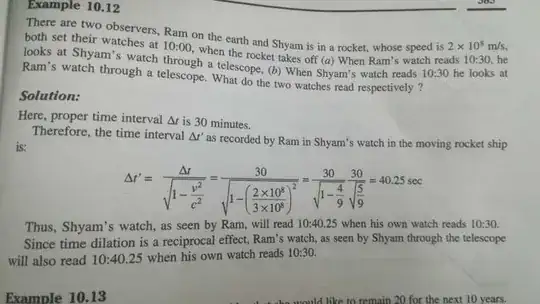Less time or more time depends on how you measure it.
Moving clock measures shorter time interval, that two (at least) synchronized by Einstein's synchronization method clocks of “stationary” reference frame.
Hence, two clocks of stationary reference frame measure greater time interval, than moving one.
That discussion and the book only lead you astray. The book by Arthur Beiser “Concepts of Modern Physics” contains completely wrong statement (Chapter Relativity, p. 11, Formula 1.5)
http://phy240.ahepl.org/Concepts_of_Modern_Physics_by_Beiser.pdf
Beiser speaks about moving observer, but gives Transverse Doppler Shift formula for stationary one. He says:
Observer moving perpendicular to a line between him and the light source measures transverse frequency shift
$$\nu=\nu_0 \sqrt {1-v^2/c^2}$$
It is wrong. Since “moving” observer’s clock run slower, he sees, that clock “at rest” is ticking $\gamma$ times faster and light received at points of closest approach is $\gamma$ times blueshifed.
The correct formula is:
$$\nu= \frac {\nu_0} {\sqrt {1-v^2/c^2}}$$
Please look for transverse Doppler Effect here:
https://en.wikipedia.org/wiki/Relativistic_Doppler_effect
Or Einstein’s 1905 paper, where he speaks about moving observer and gives correct formula for a frequency as measured by moving observer (chapter 7)
http://hermes.ffn.ub.es/luisnavarro/nuevo_maletin/Einstein_1905_relativity.pdf
Observer "at rest" measures that "moving" clock tick slower. "Moving" observer measures, that clock "at rest" ticks faster than his own.
The only problem is to choose one frame an to stay within it, or to decide who is "moving" and who is at "rest".
If each of them is stubborn like sheep and shouts that it is he who is "at rest", then each of them can really think that the other is slower and come up with all kinds of nonsense.
